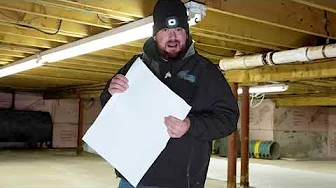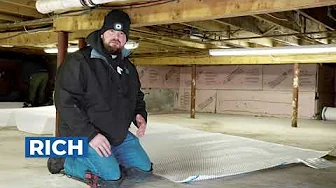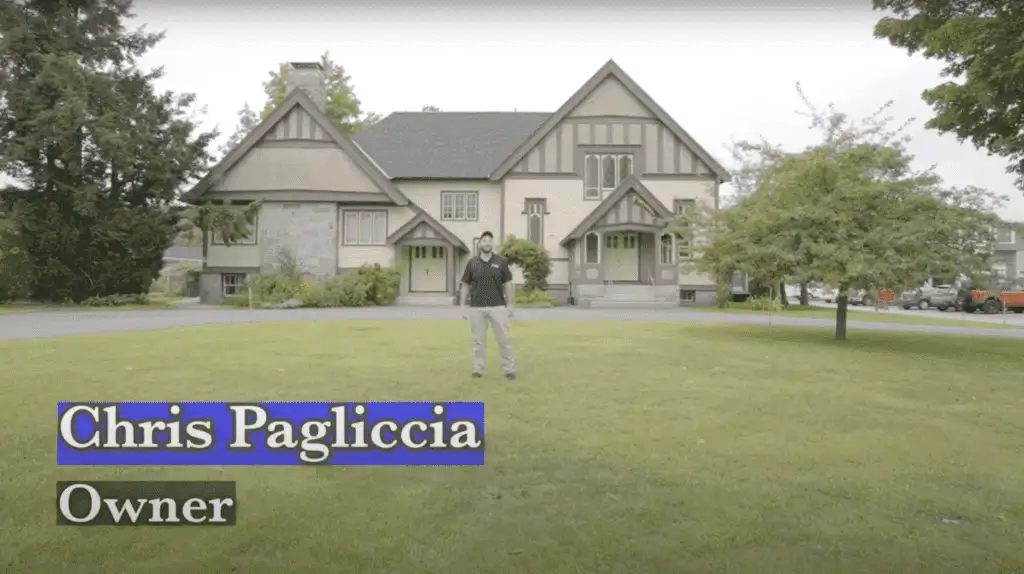Foundation Crack Repair Lynnfield MA
Foundations don’t fail overnight—invisible cracks today can evolve into costly repairs tomorrow. In Lynnfield, MA, where weather and soil conditions pose unique challenges, staying ahead of foundation damage should be a priority for every homeowner. Ignoring even minor cracks can invite bigger problems: structural instability, water intrusion, and pest infestations. The good news? Catching damage early saves money, time, and peace of mind. Let’s break down what you need to know to keep your foundation in solid shape.
Real People - Real Great Results
Crawl Space Video Playlist
Why Foundation Cracks Happen
Cracks in your foundation don’t just appear out of nowhere—they’re usually caused by forces at work beneath the surface or around your home. Understanding these triggers can help you act faster and prevent more serious damage. Here are four common reasons why foundations in Lynnfield, MA, develop cracks:
- Settling of Soil: Think of the ground as a living, breathing entity. Over time, the soil under your foundation can shift. Maybe it’s compacting from the weight of your home, or maybe it’s just changing shape beneath you. Either way, when the support beneath your foundation moves, the concrete responds by flexing—and that’s when cracks form.
- Climate Factors: Welcome to New England, where the winters are harsh, and the freeze-thaw cycle is relentless. When water in the soil freezes, it expands, putting pressure on your foundation walls. When it thaws, the soil contracts, leaving gaps and causing shifts. This constant expansion and contraction can stress your foundation enough to make it crack.
- Poor Drainage: Water is concrete’s worst enemy. If rain or runoff pools around your home because of bad grading or clogged gutters, it saturates the soil and weakens the foundation. Wet soil expands, pushing against the walls, while persistent pooling can even erode the concrete. With time, you’re staring at cracks that could’ve been avoided.
- Improper Construction: Not all foundations are created equal, especially when shortcuts are involved. If a builder used low-quality materials or skipped essential steps during construction—like compacting the soil properly—you’ve got a vulnerable structure. And when stress hits, those cracks will show up faster than you’d like.
Knowing exactly what’s behind your foundation problems is the first step to solving them. Whether it’s the shifting earth, New England’s rollercoaster weather, or inadequate construction, addressing the root cause keeps the issue from rearing its ugly head again.
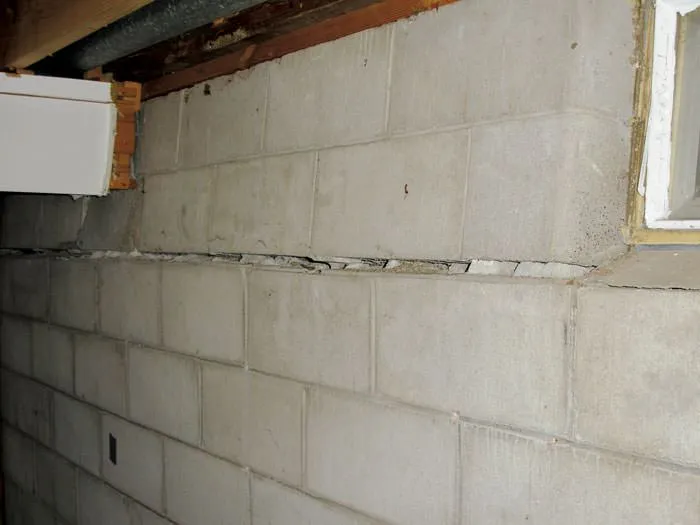
Signs Your Foundation Needs Repair
Spotting the signs of foundation trouble early can make all the difference between a quick, affordable fix and a major structural overhaul. Although not every crack spells doom for your home, there are clear indicators that can help you decide when to take action.
- Visible Cracks: If you notice cracks in your foundation, walls, or floors, take a closer look. Hairline cracks may be harmless, but wider or stair-step cracks usually point to underlying structural issues that need attention.
- Sticking Doors and Windows: Doors that don’t close properly or windows that become hard to open could be warning signs of foundation settlement. These alignment problems occur because the frame of your home shifts along with the settling foundation.
- Uneven or Sloping Floors: Floors that no longer feel level or have noticeable dips are red flags. This can indicate that your foundation has shifted or sagged, often due to soil movement below the structure.
- Gaps Where There Shouldn’t Be Any: Keep an eye out for spaces forming between walls and ceilings, or where floors meet walls. These gaps often suggest that your foundation isn’t holding its original shape as tightly as it should.
If you spot any of these issues, don’t shrug them off. Delaying repairs or dismissing them as cosmetic could lead to escalating problems, higher repair costs, and, in extreme cases, significant safety risks. When it comes to cracks and shifts in your foundation, a wait-and-see approach is rarely the right choice.
Types of Foundation Cracks
Not all foundation cracks are created equal. Their direction, size, and cause determine whether they’re a minor nuisance or a flashing red light for serious structural issues. Let’s break it down:
- Vertical Cracks: Vertical cracks are the least intimidating of the bunch. They’re fairly common and usually the result of your foundation settling naturally after construction. Think of them like the wrinkles of a house aging—visible, but not necessarily a crisis. Vertical cracks are often thin and straight, running up and down the wall. The good news? These can frequently be fixed with epoxy injection or sealant without much fuss. Just don’t ignore them if they start to widen.
- Horizontal Cracks: Here’s where things get dicey. Horizontal cracks are typically a sign of outside forces bullying your foundation. Most often, the culprit is soil pressure—moisture-saturated dirt pressing against your walls—or water damage pushing from the outside. These cracks can indicate significant stress on your home’s structure and should be addressed immediately. Delaying repair can compromise the stability of your foundation, setting the stage for bowing walls or even total failure.
- Diagonal Cracks: Diagonal cracks are like the wildcard of foundation issues. Think of them as unsymmetrical red flags: they’re often a sign of uneven settling, with the soil on one side of your home behaving differently than on the other. These cracks run at an angle, signaling that your foundation is essentially being pulled in two directions. Fixing them often requires more than surface-level repairs—soil conditions under the home need addressing too.
Knowing which type of crack you’re dealing with is half the battle. The other half? Getting ahead of the repair before the situation worsens.
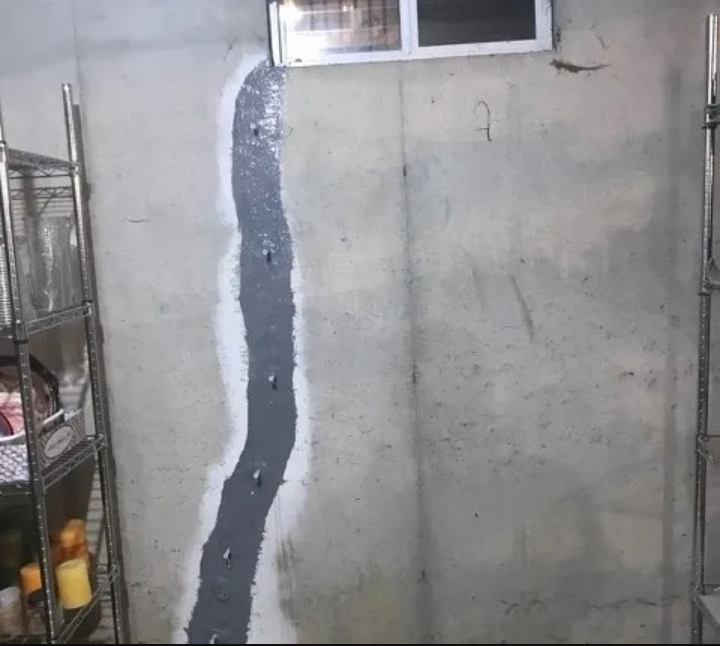
Methods for Repairing Foundation Cracks
Foundation crack repair isn’t a one-size-fits-all solution. The best method depends on the type, size, and underlying cause of the crack. Here’s a breakdown of the most effective techniques:
- Epoxy Injection: Epoxy injection is the go-to fix for small, non-structural cracks. Think fine, hairline fractures resulting from typical settling. The process involves injecting a two-part epoxy resin into the crack, sealing it airtight and restoring the concrete’s original strength. This method works well to stop water seepage and prevent further widening, but it won’t solve issues like shifting soil or structural instability—it’s a patch, not a cure.
- Carbon Fiber Reinforcement: For horizontal cracks (the scary kind), carbon fiber reinforcement steps in as a hero. Horizontal cracks are often a sign of external pressure, such as expanding soil pressing against the foundation walls. Carbon fiber strips, adhered vertically along the crack with strong epoxy, prevent further bowing or shifting. It’s a low-profile, cost-effective way to stabilize walls without the need for extensive excavation, but timely intervention is critical.
- Underpinning: Underpinning is reserved for heavyweight problems. Settling soil or poor initial construction can leave your foundation uneven, leading to severe cracks and compromised stability. Underpinning involves extending the foundation deeper into stable soil using piers or grout. It’s labor-intensive and requires professional expertise, but it’s the gold standard for addressing foundational shifts and ensuring long-term durability.
- Exterior Waterproofing: Cracks caused by water damage need more than just a patch job. Exterior waterproofing attacks the problem at its source—moisture. The repair process typically includes applying a waterproof membrane to the foundation’s outer surface and improving drainage systems to redirect water away from your home. While it’s invasive and requires soil excavation, it’s a powerful deterrent for future water-related issues. Bottom line: If water is the culprit, this is the fix you can’t skip.
Each method comes with its strengths and limitations. A professional evaluation is key to selecting the right approach, as the wrong repair can be ineffective—or worse, exacerbate existing issues.
Preventing Future Foundation Cracks
Foundation cracks don’t just appear out of nowhere—they’re often the result of preventable factors. Tackling those head-on saves you stress and money down the line. Here’s how you can stay ahead of the curve:
- Improve Drainage: Water is the enemy of a solid foundation. Gutters and downspouts should channel water at least five feet away from your home. If water is pooling near your foundation, you’ve got a problem. Fix it before it fixes you.
- Grade Your Soil: Flat or inward-sloping soil is bad news. A slight slope away from the house ensures water naturally flows away instead of settling near the foundation. Think of it as giving gravity a hand to protect your home.
- Maintain Consistent Moisture Levels: Dry soil shrinks, wet soil expands, and both put unnecessary stress on your foundation. A little soil hydration during dry spells can go a long way in keeping things stable. It’s not tedious—it’s smart insurance.
- Inspect Annually: A quick walk around your property a couple of times a year can prevent a major headache. Check for the small things: cracks, misaligned bricks, or anything else that seems off. Catching it early costs less than ignoring it until it’s too late.
By staying proactive, you’re not just addressing issues—you’re stopping them before they even start. Lynnfield’s climate is tough, but smart habits help protect your foundation from becoming its next victim.
When To Call a Professional in Lynnfield, MA
It can be tempting to handle foundation crack repair on your own. After all, a tube of concrete sealant and a free weekend seem like reasonable solutions for minor issues. And for small, surface-level cracks, that may suffice temporarily. But here’s the thing: cracks are rarely just surface-deep. More often than not, they’re warning signs of underlying issues that demand professional attention.
If you’re dealing with anything beyond a thin hairline crack—wider than 1/8-inch, horizontal patterns, or zigzagging shapes—it’s time to bring in the pros. These signs often point to deeper problems like shifting soil, hydrostatic pressure, or even faulty construction techniques. A professional in Lynnfield, MA, won’t just patch the crack. They’ll assess the health of your entire foundation, identify the root cause, and recommend a repair solution that lasts.
Additionally, call a professional if you notice symptoms like sticking doors, sloping floors, or water pooling around your foundation. These issues rarely resolve themselves and could escalate quickly without proper intervention. Foundation problems are like that—fix them right the first time, or they’ll keep coming back to cost you more.
In Lynnfield, MA, you’re fortunate to have access to experts who know the area’s soil conditions and climate-related challenges. Sure, it might feel like you’re surrendering control by calling in help, but trust us—this is one job where DIY pride can lead to bigger, costlier regrets.

Conclusion
Foundation maintenance is your first line of defense against long-term headaches. Cracks are more than just cosmetic nuisances—they’re warning signs that your home is asking for help. In Lynnfield, MA, where weather, soil conditions, and natural wear all conspire against your property, vigilance pays off. Spot a crack? Act fast. Small repairs today can save you from structural nightmares tomorrow. Your home supports your life; make sure its foundation supports your home.
Reviews from Happy Customers
Our top priority is customer satisfaction, and we work closely with clients to understand their unique needs and goals.




